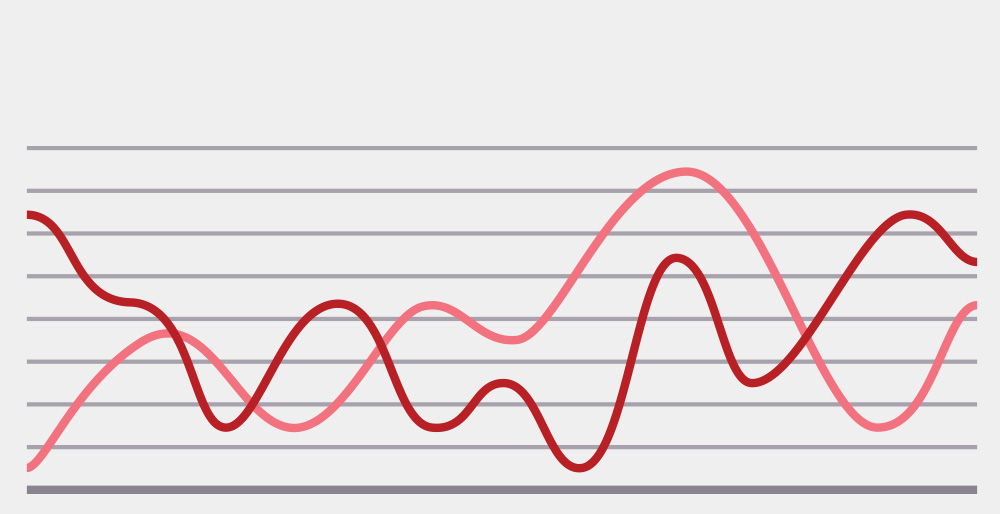
Ratios are the Key Performance Indicators (KPIs) of a company and are divided into four sections:
1. Liquidity Ratios
2. Profitability Ratios
3. Financial Leverage Ratios
4. Efficiency Ratios
Liquidity Ratios
Working Capital
Definition: The amount of capital available for day-to-day financial operations
Formula: Currents Assets – Current Liabilities
Current Ratio
Definition: Measures a company’s ability to cover its short and long-term financial obligations
A Current Ratio over 1 is ideal
Formula: Currents Assets / Current Liabilities
Profitability Ratios
Net Profit Margin
Definition: The percentage of Revenues that are left After all expenses, depreciation, amortization, interests, and Taxes are deducted
Formula: Net Profit / Net Revenue
Return On Assets (ROA)
Definition: The percentage of Net Profit relative to the company’s total Assets.
The ROA demonstrates how well a company is using its assets/ resources to generate profit
Formula: Net Profit / Total Assets
Operating Income Margin
Also Referred as Earnings Before Interest, Taxes, Depreciation, Amortization or EBITDA Margin
Definition: The percentage of Revenues that are left Before expenses, depreciation, amortization, interests, and taxes are deducted
Formula: Operating Income / Revenues
Return On Equity (ROE)
Definition: The percentage of Net Income earned in comparison to the total Equity of a company. A higher the ROE means that a company is using its equity efficiently to generate profit. A ROE over 20% is considered very positive.
Formula: Net Income / Equity
Gross Profit Margin
Definition: The percentage of Profit left after deducting Only Cost of Goods Sold (COGS) or direct costs of operations. The Gross Profit Margin excludes Variable and Fixed Costs, Depreciation, Amortization, Interests, and taxes
Formula: Gross Profit / Revenue
Financial Leverage Ratios
Debts To Assets
Definition: The percentage of the company total assets that were financed or funded by debt
Formula: Total Liabilities / Total Assets
Capitalization
Definition: The percentage of debt in a company’s total capital structure
Formula: (Long Term Liability) / (Long Term Liability + Owner’s Equity)
Debt To Equity
Definition: The percentage of debt used to finance a company’s assets relative to its equity
Formula: Total Liabilities / Total Equity
Debt To Working Capital
Definition: The percentage of debt relative to a company’s short term financial strength. It helps to determine if a company is able to meet its short term financial obligations.
Formula: (Long Term Liability) / (Current Assets – Current Liabilities)
Efficiency Ratios
Cash Turnover
Definition: The amount of times a company’s replenished its cash account/balance. A high Cash Turnover Ratio is considered positive.
Formula: Revenue / Cash
Revenue To Working Capital
Definition: Determines how well a company is using its cash to generate sales
Formula: Revenue / (Current Assets – Current Liabilities)
Fixed Asset Turnover
Definition: Determines how well a company is using its fixed assets to generate sales
Formula: Revenue / Fixed Assets
Other articles

5 THINGS YOU CAN DO TO PREVENT BUSINESS BANKRUPTCY
Hope is Not Lost
You may have decided that the only choice you have left is to file bankruptcy, terminate your employees, and lose the business you have worked so hard to build.

BUDGET MANAGEMENT EXPLAINED
IMPORTANCE
Budget Management is the process in place to forecast the required amount to cover operational costs, and prepare for future contingencies. A sound budget system will guarantee the continuous financial stability of a company.

4 THINGS YOU CAN DO TO FACE A DIFFICULT FINANCIAL PERIOD
If you have been in business for a considerable amount of time, it is likely that your company will go through a difficult time. These harsh stretches could originate either internally or externally. From the inside, it could be caused by a serious breakdown of...